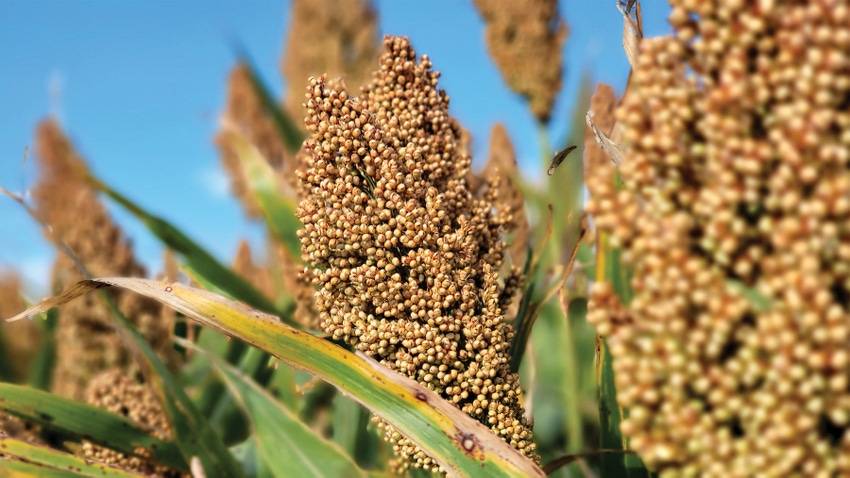
Sorghum producers have three new postemergence herbicide technologies in their grass control toolbox: Double Team, igrowth and Inzen sorghum.
Sorghum Checkoff Director of Agronomy Brent Bean, discussed the advantages and disadvantages of the trio at the recent Texas Plant Protection Conference, Bryan. Bean emphasized the importance of stewardship of the technologies.
“It’s critical,” Bean said. “It’s critical we do a good job making sure these technologies last.”
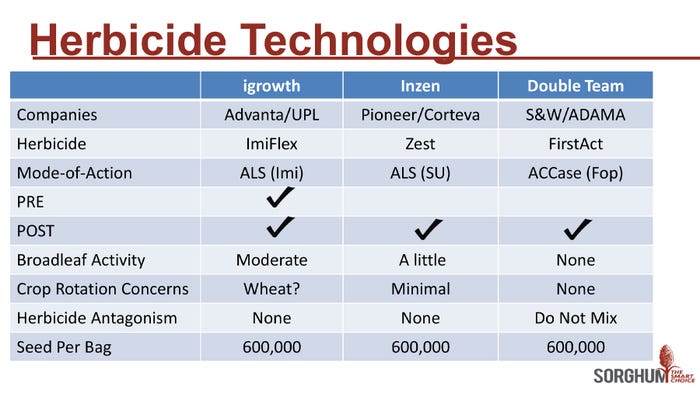
Grass control
Grass control solutions have been on sorghum producers’ wish list for some time. “Now, not only do we have one, but we have three technologies,” he told the crowd.
So, how do they work? How are they different? Bean made the following observations and recommendations:
Know your technology and what herbicide pairs with which company’s seed.
“You cannot use the technologies interchangeably,” Bean said. “You can’t plant Inzen seed and spray it with FirstAct. That’s not going to work.”
Each technology requires a specific herbicide.
“Both the igrowth and Inzen sorghum are ALS inhibitors. However, it doesn’t mean they are the same thing. They’re in different subclasses, so you cannot use them interchangeably. If resistance develops in one of these two technologies, the weed may also be tolerant to the other technology. For this reason, we don’t want to rotate those two particular technologies.”
Broadleaf weed control.
“ImiFlex does have some activity on broadleaf weeds, but don’t expect it to control them completely. It is going to need help. You may luck out and get a little bit of broadleaf activity with Zest, but it’s not going to be much. You guys that have grown corn before, may remember Accent herbicide. Zest has the same active ingredient as Accent. The herbicide is great on grass, but has very little broadleaf activity.” FirstAct has no activity on broadleaf weeds.
All three technologies are sold in 600,000-seed bags. “The whole industry is beginning to move that direction.”
Consider rotational restrictions.
“With FirstAct that is used in Double Team sorghum, there's really nothing to worry about from a crop rotation standpoint.”
With Zest, used with Inzen sorghum, take note of the asterisks on the table below. “Planting back to sorghum following Zest has a 10 to 18 months restriction. But the asterisk means you can replant sorghum the following year if a different technology is used or conventional sorghum is planted. Pioneer Seed encourages the use of one of the other technologies in rotation with Inzen, which is good stewardship.”

Inflex has significant soil residual, “which I’m a little more concerned about.” The corn rotation restriction is eight-and-a-half months, cotton nine months and wheat, three to 15 months. “The rotation restriction for wheat is dependent on rainfall or irrigation. The label says you need to have at least 10 inches of rain on the field before planting wheat three months after application, otherwise wheat cannot be planted until 15 months after application. I have seen wheat that had to be replanted when these guidelines were not followed.
“Just be aware of some of those restrictions, especially if you're going immediately back to wheat in a double crop situation with ImiFlex.”
“The three companies that sell these technologies encourage growers to continue to use a good pre-emergence herbicide with these technologies. They are not going to be standalone technologies, especially when broadleaf weeds also need to be controlled.”
Hybrid breakdown
Igrowth
Igrowth offers three products (refer to Table 2). “The last one, G2193G, is one of the more adapted ones down here (Bryan, College Station), a little later maturing. But it also has good sugarcane aphid tolerance, which is important for this region. The G2168IG is popular and would also work in this region.”
The G2168IG is 65 days to bloom. Bean says it’s a little bit shorter than the G2193IG.
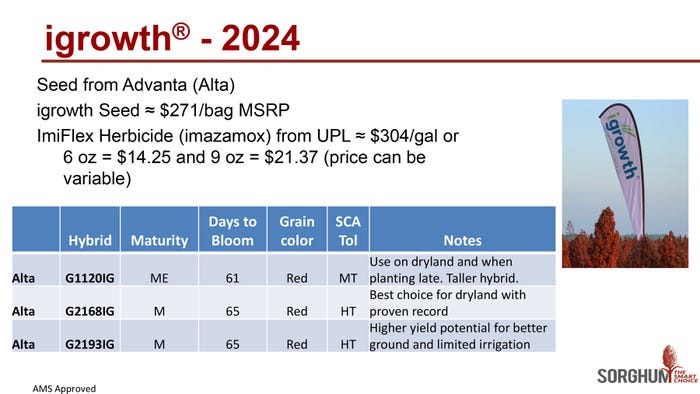
Double Team
Double Team has four options available. “Three are early to medium-early in maturity. The fourth product, SP65B21DT is a little longer in maturity and likely more adapted to this area. For later planting, SP30A30DT and SP45A45DT, have a good track record on the High Plains the last couple of years.
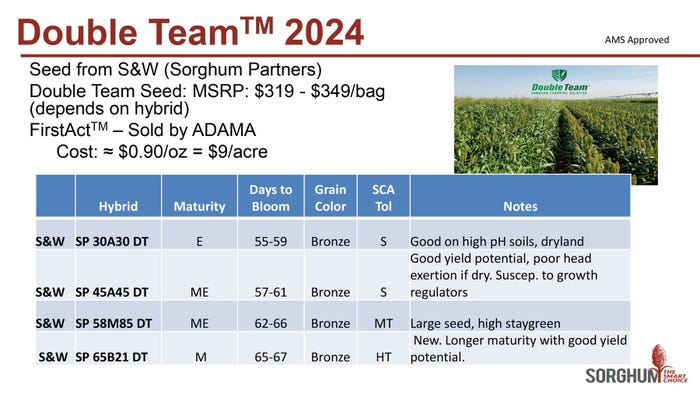
Inzen
Inzen has two hybrids, which are known as more late-maturing. “The one that is supposed to be more for this area is the second one, the P83Z28. It is pretty susceptible to sugarcane aphids. I’ve talked to Pioneer agronomists, and they tell me that P85Z65, which is supposed to be more of a Plains hybrid, is actually doing well down here.”
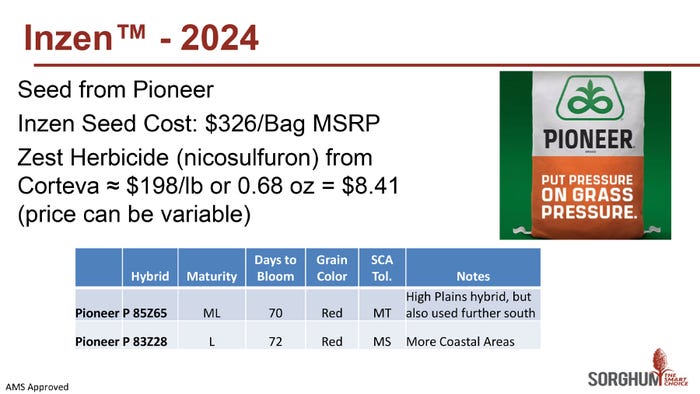
Due to the cost, Bean advises that producers without a grass problem may want to plant conventional hybrids. “However, if you’ve got grass, your yields are going to be down. That’s where you’re going to need to use these technologies.”
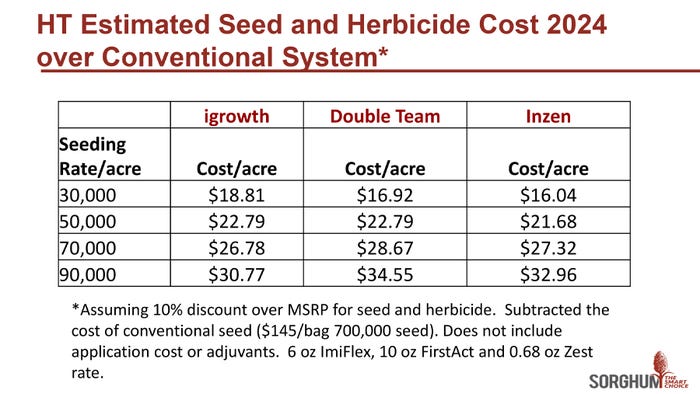
All three technologies are going to cost about the same to use. He says all three work well on most grasses. “I haven’t seen a grass on which they do not work well, except for possibly Texas Panicum, which can be a little iffy.”
Studies show the technology also works well on volunteer corn and sorghum.
About the Author(s)
You May Also Like






